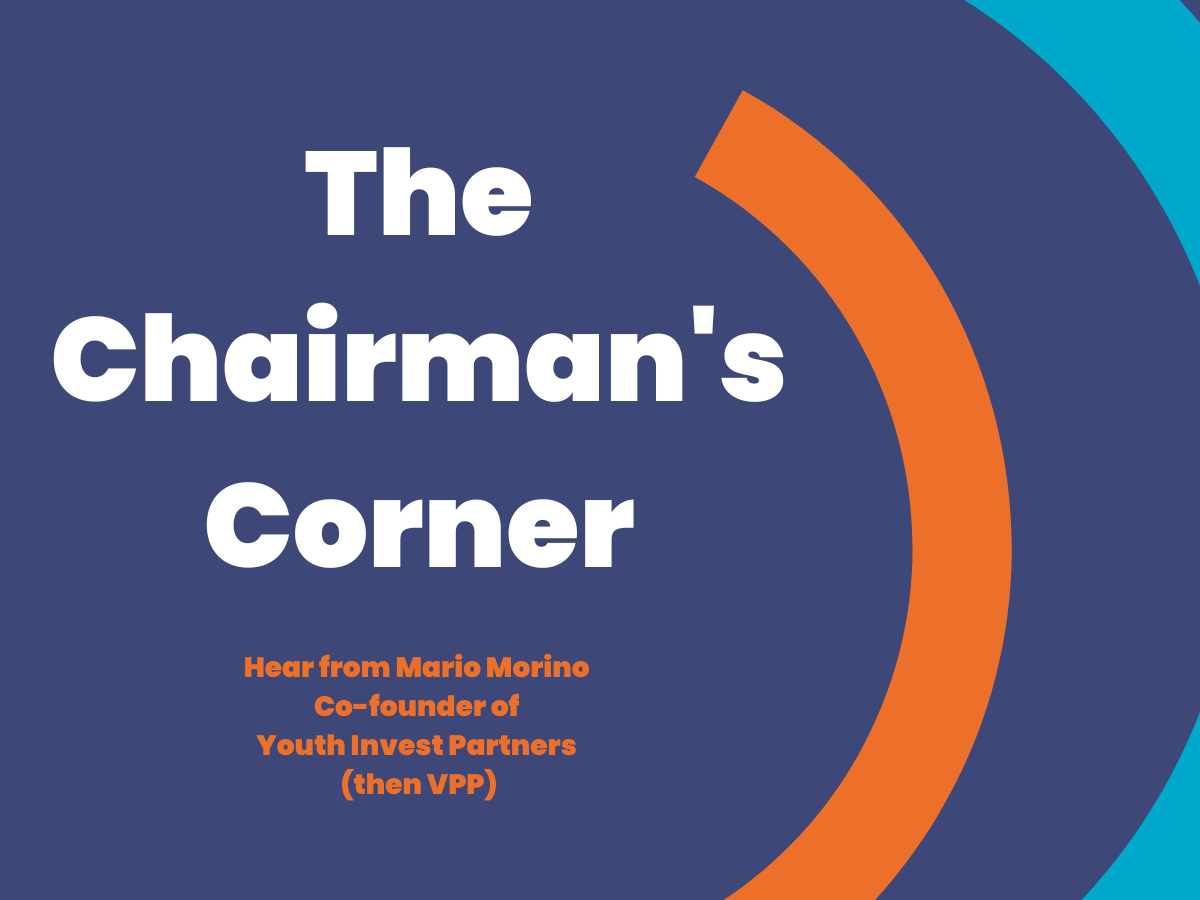Chairman’s Corner: September 2006

Some Thoughts About the Buffett-Gates Foundation Philanthropic Action
by Mario Morino, Co-founder of VPP
Since Warren Buffett announced plans to give a large portion of his wealth to the Bill & Melinda Gates Foundation, countless analysis and commentaries, both favorable and unfavorable, have been offered. The wide range of comments, criticisms, and postulations clearly illustrates that “beauty is in the eye of the beholder.” To me, however, it is a much less complicated deed than most have suggested. Buffet’s action, at least on the surface, appears to be consistent with a man who has made well-grounded, common sense decisions in amassing his wealth over the years. Let me quickly qualify that the comments that follow are pure conjecture, as I’ve not met either person nor been privy to their views or thinking.
To me, the beauty and value lie in the clear focus and sheer simplicity of the action. And, Buffett has set a path for others to consider, regardless of the size of the donation. Here are the inferences I draw:
- He understood that enormous leverage would occur from pooling his resources with those of the Foundation, obviously financial but, especially, as a catalyst/influencer.
- He turned to someone he knows and respects (and I have to believe the value of the relationship was a large factor).
- He chose to benefit from an established organization, rather than build one himself, thus avoiding the dilution of resources for impact.
- He went with an organization that was developing a rigor and discipline in its grantmaking which resonated with his expectations for how an organization should manage its affairs, make decisions, and hold itself accountable.
- He chose to “give while still living,” no doubt against the urgings of his tax advisors.
- And, he wisely recognized that he may not have the patience or enduring interest for philanthropy and had the honesty to say so and then act.
Now the onus is on the Gates Foundation to build on what they’ve already done and to use the very large infusion of capital from Buffett wisely. Unfortunately, there are many who will be ready to pounce on every failure or misstep. Again, here are some observations from one who hopes they succeed:
- The Foundation has been roundly criticized for its highly controlled and centralized decision-making—as one said, “The three or four at the top make all the decisions.” Yet, I hope they don’t change this approach for their most strategic decisions and initiatives. Ceding the authority to make bold, audacious decisions means they run the risk of sub-optimizing their decisions, growing a bureaucratic process, and calcifying their effectiveness.
- The Foundation has not been afraid to take on some of the most intractable social issues, knowing that they will make mistakes yet willing to learn from them; I hope they do more to cultivate this culture. Their efforts in education have not been without difficulties, but they at least try to understand what went wrong and make adjustments. Further developing an innovative, learning culture within the Foundation may well be one of their largest challenges.
- I hope the Foundation will not rush to build up the organization in order to “move the money” required for annual distribution and instead stay focused on wise philanthropic investing. The reality is that the type of talent the Foundation needs to bring onboard is scarce and the price of getting the wrong talent is steep. The private sector world of investing has shown how difficult it is to scale a venture capital or private equity firm to go from investing $500 million to $1 billion annually (comparable to Buffett’s gift which almost doubled the Foundation’s “philanthropic investment capital”). Staying with large investments of capital into several, very important initiatives is one way to help smooth this difficult transition.
- Finally, and perhaps most important, the Foundation cannot become an excuse for governments to not do what they need to do in serving society’s needs. It must leverage its brand and assets to move governments to do their part in providing the public funding and resources many of society’s social problems require. It is absolutely vital that the Foundation—especially with its larger capital base, thanks to Buffett—not be viewed as a replacement or substitute for public dollars and resources. As Philanthropy Roundtable CEO Adam Meyerson said, “Even with the Buffett gift, the Gates Foundation will still account for only 1 percent of American charitable giving.” Gates can and must be a great catalyst, both in the US and globally, to help ensure public and private funding play critical roles.
My hat is off to Warren Buffett. His action, something no tax advisor would ever recommend, illustrates he felt it was the right thing to do, irrespective of the financial consequences. His approach to philanthropy also seems consistent with how he lives his life—investing wisely in others without the need for personal acclaim.
Similarly, I applaud the Gates Foundation’s decision to accept the formidable challenge Buffett’s action has presented. A lesson I hold close, based on my own experience, is “Leadership is everything” and the Gates Foundation can and should be a premier example. Since 1997, the Foundation, under the guidance of Patty Stonesifer and William Gates, Sr., has used “passion with pragmatism” to respond to some of society’s most daunting challenges. Now, with Bill and Melinda Gates focusing their full-time attention on the Foundation’s work, I am even more optimistic that this team of leaders can indeed make the important and strategic decisions that will lead to long-term systemic change.



